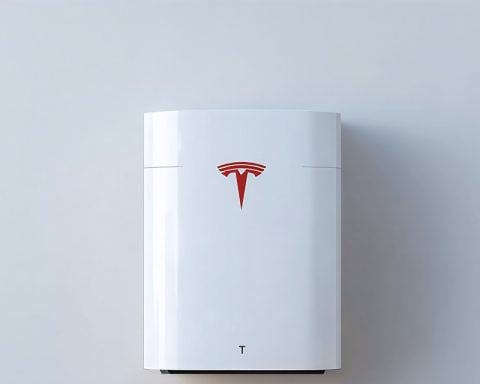- Vistra’s Moss Landing Energy Storage Facility is now the world’s largest lithium-ion battery installation, boasting a capacity of 400 megawatts.
- The facility helps stabilize California’s energy grid, especially during peak demand and hot summers, by storing solar energy for use after sunset.
- The recent 100-megawatt expansion reflects California’s dedication to sustainable energy, achieved even during the challenges of the pandemic.
- Planned expansions aim for a capacity of 1,500 megawatts, supporting California’s infrastructure resilience against wildfires and extreme weather.
- Moss Landing champions a reduction in fossil fuel dependency, leveraging decreasing lithium-ion costs and strong policy support for renewable growth.
- The facility exemplifies the potential for clean energy innovations to provide energy security and a sustainable future.
In a groundbreaking leap for clean energy, Vistra’s Moss Landing Energy Storage Facility has expanded its power to a staggering 400 megawatts, making it the world’s largest lithium-ion battery installation. As California battles sweltering summers, this mega-battery steps up, stabilizing the grid precisely when energy demand peaks. Imagine capturing the sun’s rays all day, and turning them into a seamless flow of electricity, powering homes even after sunset.
Led by visionary advancements, this 100-megawatt boost—accomplished even amidst the pandemic—embodies California’s relentless pursuit of sustainable energy solutions. Moss Landing is not just vast but versatile, designed to eventually expand to an awe-inspiring 1,500 megawatts. This growth potential aligns perfectly with the state’s mission to fortify its infrastructure, ensuring resilience as wildfires and extreme weather events become more frequent.
The facility leverages cutting-edge lithium-ion technology, turning sunlight into a steady energy reserve. Moss Landing doesn’t just aid California in slashing its dependency on fossil fuels—it pioneers a cleaner, sustainable legacy. Despite challenges like battery lifespan and environmental impacts from mining, the path forward sees decreasing costs in lithium-ion solutions and strong policy backing, further propelling the expansion of renewables.
As the call for grid stability mounts, Moss Landing stands as a symbol of triumph over energy insecurity, proving that embracing innovation and expanding clean energy capacity can secure a bright, sustainable future for all. This is not just ingenuity—it’s a revolution. Clean energy isn’t just coming; it’s already here, lighting our way forward.
The Future of Energy: How Moss Landing Transforms the Power Landscape
Pros and Cons of the Moss Landing Energy Storage Facility
Pros:
– Massive Storage Capacity: At 400 megawatts, Moss Landing is currently the largest lithium-ion battery installation globally, providing significant grid stability during peak energy demand.
– Scalability: The facility is designed to expand to 1,500 megawatts, ensuring future-proof adaptability for increased energy needs.
– Environmental Impact: By storing renewable energy, the facility reduces reliance on fossil fuels and lowers greenhouse gas emissions.
Cons:
– Environmental Concerns: Lithium-ion batteries can have a negative environmental impact due to the mining processes involved.
– Battery Lifespan: The eventual need for battery replacement poses both an economic and environmental challenge.
How Does the Facility Operate?
Technology: The Moss Landing facility uses state-of-the-art lithium-ion battery technology to store energy, primarily solar, ensuring that energy harnessed during the day is available as demand spikes or when renewable sources are not producing power.
Operation: This facility operates by charging when energy is abundant (like sunny days) and discharging during peak demand periods or outages, providing seamless electricity flow.
Market Forecast: The Future of Energy Storage
With global initiatives trending towards reducing carbon footprints, the energy storage market is set to grow exponentially. Market analysts predict the global energy storage market could increase to over $546 billion by 2035 due to falling costs of battery technology and increasing renewable energy integration.
Top 3 Questions Answered
1. What innovations make Moss Landing the world’s largest of its kind?
– The Moss Landing Energy Storage Facility combines cutting-edge lithium-ion battery technology with extensive scalability, offering an unmatched solution to energy storage that can grow as demand increases.
2. What are the broader implications of Moss Landing’s success on global energy strategies?
– Moss Landing stands as a model for clean energy initiatives worldwide, demonstrating the feasibility and benefits of large-scale energy storage systems in achieving carbon reduction goals and improving grid reliability.
3. How does the facility’s expansion align with California’s environmental goals?
– California aims to drastically cut its carbon footprint while improving grid resilience. Moss Landing’s scalable design supports these objectives by providing robust energy storage solutions crucial for maximizing the use of renewable resources.
For more insights on energy storage innovations and trends, visit Vistra.













